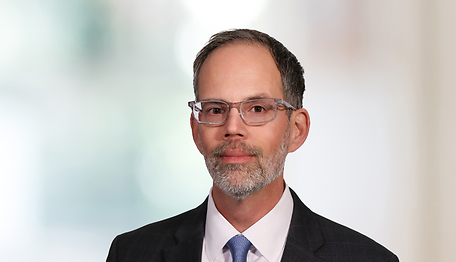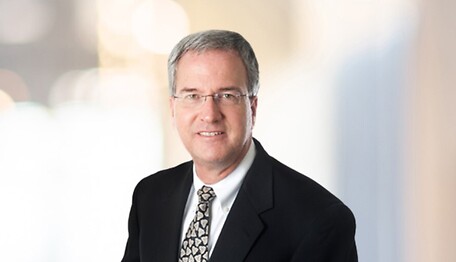NY State Appellate Court Holds That Pollution Exclusions Bar Duty to Defend Under Liability Policies for Claims Alleging Exposure to PFAS
On January 6, 2022, the New York Supreme Court, Appellate Division, Third Department, held that the “sudden and accidental” pollution exclusion (SAPE) and “absolute” pollution exclusion (APE) in liability policies relieved two insurers of a duty to defend the insured-manufacturer in connection with claims alleging damages as a result of exposure to perfluorooctanoic acid (PFOA) and perfluorooctane sulfonate (PFOS), which are man-made chemicals within the group of per- and polyfluoroalkyl substances (PFAS). See Tonoga, Incorporated v. New Hampshire Insurance Company, No. 532546, 2022 N.Y. App. Div. LEXIS 105 (App. Div. 3rd Dep’t Jan. 6, 2022).
In Tonoga, starting in 1961, the insured and its predecessors owned and operated a manufacturing facility in Petersburg, New York that produced materials coated with polytetrafluoroethylene (PTFE). Until 2013, the manufacturing process involved the use of PFOA and/or PFOS. In early 2016, excessive PFOA and/or PFOS concentrations were detected in Petersburg’s municipal water supply. Later that year, the New York Department of Environmental Conversation designated the insured’s facility a Superfund site, and the insured entered into a consent agreement that required it to assist in remedial measures. 2022 N.Y. App. Div. LEXIS 105, at *1-2.
Over the next few years, the insured was sued by private parties who alleged the insured had negligently allowed PFOA and/or PFOS to pollute local water supplies, air and soil, causing the private parties “certain bodily injury and property damage.” The complaints alleged that the insured’s manufacturing had generated PFOA and/or PFOS byproducts and waste materials that were discharged into the environment “as part of [the insured]’s routine processes.” Among the allegations were that: (a) the smokestacks of the insured’s facility had discharged vapor from PFOA and/or PFOS solutions that ultimately landed on soil and seeped into groundwater; (b) the insured’s employees had poured PFOA and/or PFOS solutions into floor drains and sinks; and (c) employees had “routinely” transported waste containing PFOA and/or PFOS to a municipal landfill, where the substances eventually leached into the soil and groundwater. Id. at *7-8.
The manufacturer brought a declaratory judgment action against two of its insurers seeking a ruling that it was entitled to a defense and indemnity under liability policies effective in 1979-82 and 1986-87. Both policies contained pollution exclusions. The SAPE in the 1979-82 policy barred coverage for damages arising out of a discharge or release of pollutants, unless the discharge or release was “sudden and accidental.” The APE in the 1986-87 policy precluded coverage for damages arising out of, among other things, the actual or alleged discharge or release of pollutants at or from a premises owned, rented or occupied by the named insured. Id. at *6-7. The trial court ruled that both exclusions applied to foreclose a duty to defend.
Unanimously affirming the trial court’s ruling, the Third Department found it was “clear,” under the facts alleged, that PFOA and/or PFOS were “pollutants” within the meaning of the exclusions. Id. at *7-8. The court further concluded that the damages resulting from the “sort of broadly dispersed environmental harm” alleged in the underlying complaints fell “squarely” within the exclusions, “regardless of whether a particular substance is specifically named as a pollutant in an insurance policy, whether a substance was understood to have a detrimental effect on the environment at the time the policy was entered into or whether pollution was an intended result.” Id. at *8-9.
Addressing the SAPE in particular, the court similarly concluded that the underlying allegations “place [the insured]’s actions ‘solely and entirely within” the exclusion. Id. at *10 (quoting Technicon Electronics Corporation v. American Home Assurance Company, 542 N.E.2d 1048, 1050 (N.Y. 1989)). The court rejected the insured’s argument that certain allegations, such as “improper dumping” and “spilling” of the solutions down drains, were sufficient to establish that “at least some of the . . . pollution could have been a sudden and accidental occurrence.” Id. The court reasoned:
[The insured’s] limited examples . . . exemplify why the environmental pollution alleged here was neither abrupt nor unintentional. Rather, allegations that a solution was dumped over a period of many years suggests “the opposite of suddenness,” and, as a matter of law, volitional, long-term discharge of a substance cannot be viewed as unintended or unexpected.
Id. (quoting Northville Industrial Corporation v. National Union Fire Insurance Company, 679 N.E.2d 1044, 1049 (N.Y. 1997)).
The court further explained that “the gravamen of each suit is decidedly [the insured]’s knowing discharge of PFOA and/or PFOS as part of its routine manufacturing processes.” Id. at *11. The court therefore said it was “not persuaded” by the insured’s contention that the insurers had a duty to defend based on the insured’s speculation that discovery in the underlying actions would “likely” uncover “yet other ways” in which the insured had discharged PFOA and/or PFOS into the environment. Id. Recognizing that courts should not attempt to impose a duty to defend “‘through a strained, implausible reading of the complaint that is linguistically conceivable but tortured and unreasonable,’” the Third Department concluded that the insured had failed to carry its burden of proffering a reasonable interpretation of the underlying complaints to bring the suits within the “sudden and accidental” exception. Id. (quoting Northville Industrial, 679 N.E.2d at 1048).
The Tonoga decision falls squarely within a long line of New York precedent enforcing the SAPE and types of “absolute” or “total” pollution exclusions in cases involving significant or widespread environmental pollution (which courts sometimes call “traditional environmental pollution”). Like the Third Department in Tonoga, New York courts often apply the SAPE to find no duty to defend, unless the underlying pleadings clearly allege a genuine “sudden and accidental” release. To our knowledge, this is the first reported state appellate court decision addressing the application of pollution exclusions to the emerging area of PFAS claims. While the Tonoga case involved a fairly straightforward application of pollution exclusions under one state’s well-settled law, we expect to see more decisions addressing the application of these exclusions to PFAS claims under other factual scenarios and under other states’ laws where the outcomes may differ.
For additional information regarding this alert, please contact Robert F. Walsh (walshr@whiteandwilliams.com; 215.864.7045) or Paul A. Briganti (brigantip@whiteandwilliams.com; 215.864.6238).
PRACTICE AREAS
Practice Areas
KEY ATTORNEYS
-
Partner
-
Partner


